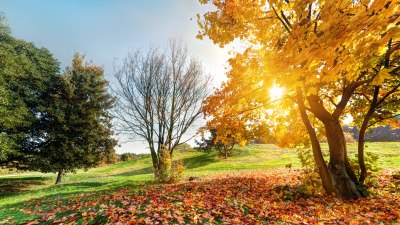Why the Earth Feels So Much More Alive in These Months
Explore how seasonal changes breathe life into Earth, enhancing our connection with nature.

As the year transitions into the later months of spring and the early days of summer, people often remark on the vibrant energy present in the world around them. The Earth seems to awaken, teeming with life, color, and sound. This sensation of heightened vitality is not merely an illusion; it stems from the rhythm of nature, the interplay of climatic factors, and various biological cycles that converge to create an invigorating atmosphere. In this article, we shall delve deeply into the scientific and experiential reasons why the Earth feels so much more alive during these months.
The Role of Seasonal Changes
Seasons, driven by the tilt of the Earth's axis and its orbit around the sun, dictate changes in temperature, light, and precipitation. When spring unfolds, increasing daylight hours signal to plants to break dormancy. Trees begin to bud, flowers bloom, and grasses green, establishing a vibrant visual landscape. These seasonal transformations are primarily driven by photoperiod - the length of day and night - which affects photosynthesis. Photosynthesis is the process by which plants convert sunlight into energy, and as the sun climbs higher in the sky, plants ramp up their production of chlorophyll, leading to a more lush environment.
The Awakening of Flora
During these months, particularly late February through June in temperate climates, the planet displays an explosion of plant life. Gardeners and nature enthusiasts eagerly anticipate the blooms of tulips, daffodils, and cherry blossoms, all of which emerge in a show of color and fragrance. This annual rebirth does not only attract human admiration; it serves crucial ecological functions. These plants not only provide food to pollinators like bees and butterflies but also form the base of the food chain for many terrestrial ecosystems. A biologically rich environment increases the overall biodiversity and ecological health, sustaining various species.
The Importance of Wildlife Activity
As flora flourishes, fauna responds sharply to these cues. Hibernating animals awaken, birds migrate back from their winter abodes, and insects emerge from their crypts. The vivid chorus of birds singing at dawn signals their territorial claims, while male animals engage in brightly ritualized behaviors to attract mates. This vibrant animal activity coupled with the lushness of plant life contributes to an atmosphere alive with motion and sound. Observers often report feeling a sense of joy and renewal when immersed in these surroundings, with the sights and sounds of thriving ecosystems casting an undeniable spell.
The Impact of Weather Patterns
Weather also plays a crucial role in how the Earth feels during these months. Warm rains replenish soils and provide essential water for plant growth. When rain falls after a dry spell, the earth releases a phenomenon known as petrichor - the smell produced when rain hits dry soil. This earthy scent, often associated with the onset of growth, significantly elevates mood and enhances our sensory experience in nature. Moreover, the warmth of the sun boosts activity levels among both animals and humans, encouraging outdoor activities and social gatherings that further amplify this sense of vivacity.
Connection to Human Well-Being
Humans are intrinsically linked to their environment, and the seasonal vibrancy of nature influences our mood and well-being. The increase in natural light exposure during these months can lead to a boost in serotonin levels, improving feelings of happiness and positivity in individuals. Studies consistently show higher levels of physical activity in spring and summer months, as people are naturally drawn outdoors. These activities not only nurture physical health but also improve mental clarity and emotional health, providing a holistic sense of well-being.
Cultural Celebrations and Rituals
As nature flourishes, cultures around the world celebrate this seasonal awakening through various rituals and festivals. Events like Earth Day, May Day, and the Summer Solstice reflect society’s recognition of nature’s cycles and the gratitude for Earth’s bounty. These celebrations foster community spirit, drawing people into outdoor spaces where they can connect with nature and each other. The collective appreciation for the season enhances the feeling of aliveness and belonging, which contributes to a more immersive experience of the vibrancy of these months.
Environmental Awareness and Conservation
With the realization of the Earth’s beautiful vibrancy comes an increased responsibility to protect these natural wonders. Awareness campaigns and conservation efforts often gain momentum during these months. People feel motivated to engage in sustainable practices, from reducing waste to participating in local restoration projects. The visible impact of healthy ecosystems emphasizes the importance of environmental stewardship. As humans work collaboratively to preserve the Earth’s vitality, they contribute to the ongoing cycle of life, ensuring that future generations can also experience this extraordinary aliveness.
A Seasonal Awakening
The perception that the Earth feels more alive during later spring and early summer is rooted in biological, ecological, and sociocultural phenomena. The awakening of flora and fauna, coupled with favorable weather patterns, uplifts human spirits and interconnected experiences. As people immerse themselves in the natural world, they are reminded of the delicate balance necessary to sustain life on this planet. Celebrating and nurturing our environment enhances our connection to nature and helps protect the vibrant ecosystems that encounter us year after year. Let us cherish this seasonal awakening and commit ourselves to preserving the wondrous beauty of our Earth, ensuring its liveliness for generations to come.











